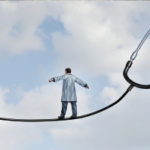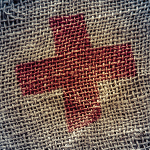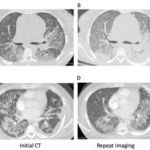After getting one too many middle-of-the-night calls from Judy Garland asking for sleeping medication, Dubois met with Paul Starr, MD, who was the chairman of the department of medicine at USC, to volunteer his time. In 1950, Starr asked Dubois to start a clinic to follow up on eight patients who were positive for a new test known as the LE cell prep. Within ten years, Dubois had the largest lupus practice in the world and, when I first met him in 1970, followed 500 patients at LA County and had already published 200 papers, including the first edition of his lupus monograph, Dubois’ Lupus Erythematosus.
Concurrent with his work at the county hospital, Dubois had a private practice in Beverly Hills. In the early 1950s, he practiced internal medicine and cardiology in partnership with Myron Prinzmetal, MD, (of Prinzmetal’s angina) and Eliot Corday, MD, (co-inventor of the ambulatory heart monitor with Norman Holter, and, whom, to his chagrin, never attained eponymous distinction).
I joined Ed’s practice once I completed my rheumatology fellowship in 1979. Dubois woke up at 5 a.m. and wrote for two hours every morning while vigorously fighting multiple myeloma, with which he survived an unusual seven years. He had two passions: photography and yachting. Ed was a friend of Ansel Adams and went on trips with him. While dying, he bought a boat and named it “Dubious,” and insisted on sailing every week until the end. His contributions included the first detailed descriptions of autoimmune hemolytic anemia, antimalarial retinotoxicity, avascular necrosis, drug-induced lupus, gangrene from vasculitis, a steroid protocol for managing central nervous system lupus, use of quinacrine for cutaneous disease, use of cyclophosphamide, as well as establishing the first NZB/NZW lab in the United States and the first report on HLA typing in lupus.
After graduating from Yale Medical School, George Friou (1919–1999) served in the Navy. In the 1950s and 1960s, he showed that a substance in the serum of patients with SLE reacted with the nuclei of cells; that substance was gamma globulin and the target in the nucleus was DNA complexed with histones. This led to him designing the first fluorescent antinuclear antibody test in 1957. Friou came to USC in the late 1960s and stayed until he moved to UC Irvine in 1980. He left the division in the extremely capable hands of Frank Quismorio, MD, and Rodanthi Kitridou, MD, while David Horwitz, MD, took his place as division chairman. Quiet but stern, Friou never felt comfortable on the West Coast. He spent every summer on an island off the coast of Maine that was accessible only by boat, and retired there in 1990. Unfortunately, he developed Alzheimer’s shortly thereafter.



